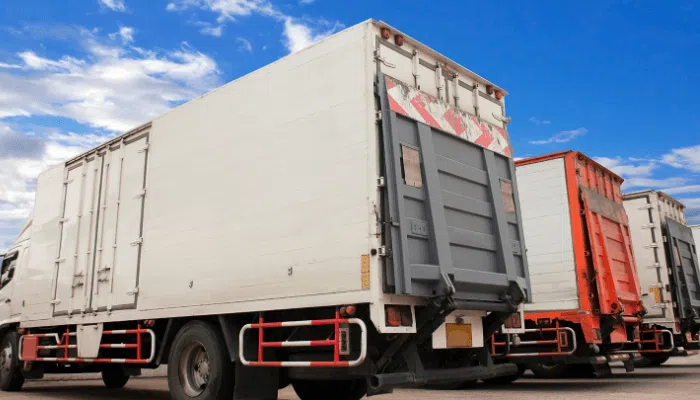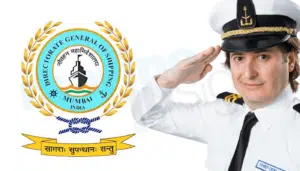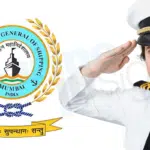What Are Liftgate Services?
Modern warehouses are designed to meet the requirements for receiving, storing, sometimes reprocessing, and redistributing different types of goods. It may be dry goods or those requiring temperature-controlled storage and other special conditions. While the focus may be on existing business and the current needs, most warehouse designs anticipate future requirements and the need to store and handle different types of goods.
The receiving areas of warehouses are designed in such a way that trucks and trailers can back up conveniently to the warehouse bays for unloading or loading cargo. The warehouse floor is usually at a height that is level with the truck bed. Mechanical ramps help further in moving the goods between the truck and the warehouse or vice versa.
What are the main factors that warehouse developers consider when setting up a warehouse?
With the steady increase in the demand for storage space across the world, facilities for future expansion and being able to set up and adapt to newer storage and other warehousing technologies are major factors.
Access to good roads and the location of the warehouse are the other two main factors that count when it comes to setting up a warehouse. Typically, locations that are close to ports, highways, and markets are preferred by logistics and warehouse operators as well as customers.
Here, we are looking at ideal scenarios. What about retail locations that may not have the facilities of a modern warehouse? What about storage depots or warehouses that have their floors at ground level? In certain cases, MHE may not be available to lower the cargo, as in unloading or lift it to the truck bed for loading. A liftgate truck could be the solution to these problems.
The liftgate is supposed to have had its origin in the late 1950s in the US. It is a hydraulic or a pneumatic platform attached to the rear of a vehicle that can be used to lower goods to the ground level or raise goods from a lower level to the level of the truck bed. It is normally operated with a simple up-down toggle switch.
Though liftgates are mostly found in vehicles used for the transport of cargo, passenger vehicles are also sometimes fitted with liftgates to help lower objects or to aid wheelchair-bound people to get out of the vehicle safely. Depending on the type or model, the cost of installation of a liftgate can come between $2000 – $7500.
How does the liftgate work?
A typical liftgate operates on hydraulic pressure (pressurized fluids). Here, the pressure pushes a piston through a cylinder raising or lowering a platform attached to it. The liftgate is fitted just below the lower frame of the truck door.
Once the truck door is closed after completing loading or unloading, the platform is retracted and folded upward to rest vertically close to the truck doors. In some vehicles, it is designed to be stowed beneath the vehicle compartment.
Typically, a liftgate is controlled from the outside by a toggle switch to fold the platform upward from a horizontal position or to open outward from a vertical position and extend from the truck’s body. The master switch to operate the liftgate is usually located inside the driver’s cabin.
Liftgates found on trucks may also operate on pneumatic pressure (pressurized gas or air) or by other mechanical methods.
The platform of a liftgate may consist of two or more plates that slide one over the other. This feature helps increase the area of the platform.
Are Liftgates Necessary?
A liftgate comes in handy when delivery is to a facility that has no loading bays or where MHEs may not be available for loading and unloading. Under-construction sites are typical examples of this as the facilities and infrastructure are yet to come up.
Similarly, deliveries of heavy items such as furniture, electrical appliances such as washing machines, refrigerators, cooking ranges, etc. to retail shops and home deliveries will need liftgate services as shops and homes are not usually equipped with loading bays or such facilities.
Most back injuries and back-related problems of warehouse staff are caused as a result of lifting heavy items from the truck to the ground or the other way round. Such injuries can be avoided by using liftgate services. Manual handling of heavy cargo can also result in damage to the goods as a result of dropping it or other incorrect handling methods.
Typically, heavy-duty liftgates can handle cargo weighing 1400 – 2400 kilograms. Liftgates help to form a kind of bridge between a truck bed and the warehouse floor. This is particularly useful when there is a large gap or some kind of obstruction between the warehouse bay and the parked cargo truck.
Most large trucks do not have liftgates as they usually carry full truckloads to customers who have the facility to receive such consignments at their warehouse. It is mostly the medium to small trucks that provide liftgate services. Such trucks are also easier for navigating narrow streets and tight corners during delivery trips.
Shipping or transport documents for the movement of certain types of cargo may specifically contain the ‘liftgate at delivery’ clause.
Using a Liftgate
As with all MHE equipment, liftgates have to be used carefully. The personnel operating it, usually the truck drivers, have to be trained properly on its usage. Some steps to be followed while operating a liftgate are given here.
- Include a visual inspection of the liftgate as part of the pre-trip procedure – especially the cylinders, hose connections, seals, and the platform.
- Back up the truck safely to the receiving area, with enough space for the liftgate to be opened, extended, and operated.
- Ensure that the truck is parked on level ground and braked securely.
- The area should be cleared of people or obstructions that may hamper the operation of the liftgate.
- The driver operating the liftgate should stand to one side of the platform before switching it on. He or she should not wear loose-fitting clothes that may get snagged in the moving parts of the liftgate.
- Ensure that before placing any goods on the platform, it is clear of any materials or liquids such as grease, oil, etc. that may cause the goods placed on it to slip or roll off.
- The cargo placed on the platform should not extend beyond its edges.
- Industrial chocks or binding straps may be used to prevent slipping or rolling of cargo.
- Platforms should not be left extended and unattended. When the usage is complete, close the truck doors and stow the liftgate back in its original position, ensuring that it is latched. This prevents accidents caused by other moving vehicles or people.
- The liftgate should only be used to handle cargo and must not be used to carry people or livestock on it.
- Follow instructions of the manufacturer and at no time should it be overloaded.
- Never drive a forklift onto the liftgate.
- The truck should not be moved with the platform down.
- Release the operating switch once the liftgate has reached the ground level or stow position. Over-engaging the switch can damage the liftgate circuitry.
Incorrect usage of a liftgate can result in injury to staff as well as damage to goods.
A liftgate is also known as a tail lift in some places. Liftgate services are normally charged to clients by the transport companies. Using liftgate services for deliveries means less manpower, less damage to goods and therefore reduced costs.
You might also like to read:
- Understanding Transloading in Logistics
- What is Accessorial Charges in Logistics?
- What is Reverse Logistics and Recycling?
Disclaimer: The authors’ views expressed in this article do not necessarily reflect the views of Marine Insight. Data and charts, if used, in the article have been sourced from available information and have not been authenticated by any statutory authority. The author and Marine Insight do not claim it to be accurate nor accept any responsibility for the same. The views constitute only the opinions and do not constitute any guidelines or recommendations on any course of action to be followed by the reader.
Do you have info to share with us ? Suggest a correction

About Author
Hari Menon is a Freelance writer with close to 20 years of professional experience in Logistics, Warehousing, Supply chain, and Contracts administration. An avid fitness freak, and bibliophile, he loves travelling too.
Latest Maritime law Articles You Would Like:
Latest News
- What is the Purpose of DG Shipping?
- What are Logistics Risks?
- How Port and Terminal Operators Can Control Emissions?
- Minimum Quantity Commitment (MQC) and Liquidated Damages in Container Shipping: Concept and Relevance
- MARPOL (The International Convention for Prevention of Marine Pollution For Ships): The Ultimate Guide
- The Ultimate Shipping Container Dimensions Guide
Subscribe To Our Newsletters
By subscribing, you agree to our Privacy Policy and may receive occasional deal communications; you can unsubscribe anytime.

















